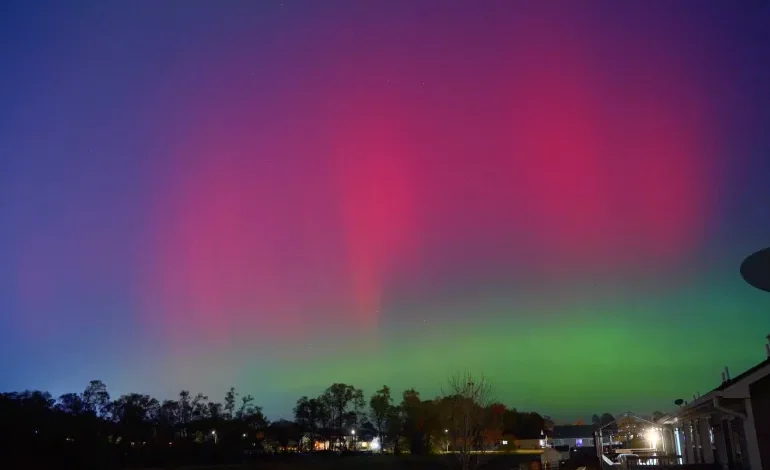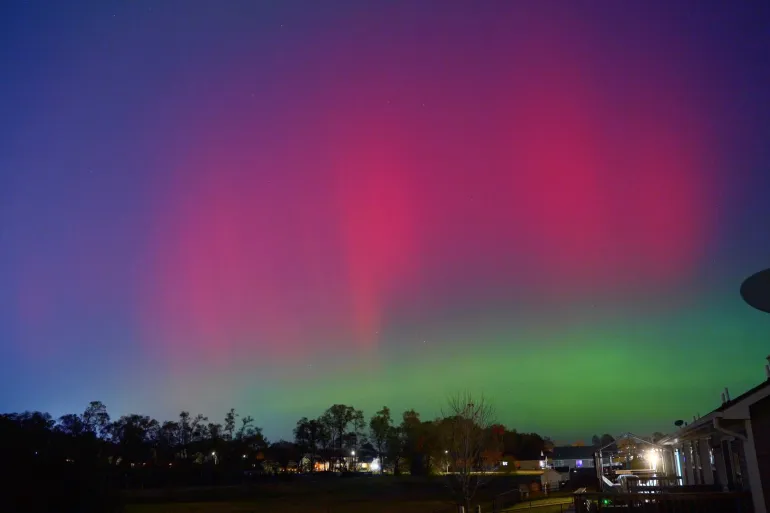Massive Solar Storms Set to Light Up Skies, Disrupt Tech, Across the Northern Hemisphere

A series of powerful solar eruptions is heading toward Earth this week, promising spectacular auroras across North America and Europe, and potentially snarling everything from GPS to satellite communications.
The US National Oceanic and Atmospheric Administration (NOAA) issued a G4 geomagnetic storm watch, the second-highest alert on its five-level scale, after detecting multiple coronal mass ejections (CMEs), huge bursts of charged solar plasma hurtling toward Earth at more than a million miles per hour.
“These storms are profoundly stronger than we anticipated,” said NOAA scientist Shawn Dahl, who confirmed that at least two CMEs had already struck the planet on Tuesday. A third, faster-moving one, is expected to arrive around midday Wednesday (17:00 GMT).
The latest burst, which erupted on November 11, already caused temporary radio blackouts across Africa and Europe, according to Space.com.
Solar storms occur when the sun’s magnetic fields realign, releasing vast amounts of energy in the form of CMEs or solar flares. When these energetic particles collide with Earth’s magnetic field, they create geomagnetic storms, and with them, the stunning light shows known as auroras.
As the charged particles slam into oxygen and nitrogen molecules in the upper atmosphere, they produce glowing waves of green, pink, and violet light. These auroras, aurora borealis in the north and aurora australis in the south, are normally visible only near the poles, but during major storms, they can appear far closer to the equator.
NOAA says the lights could be visible this week across wide swaths of the United States, including New York, Chicago, Seattle, San Francisco, Dallas, Atlanta, and Boston, as well as in Canada (Montreal, Edmonton, Vancouver, Whitehorse) and across Ireland and the northern UK.
The sun is currently nearing the peak of its 11-year activity cycle, known as the solar maximum, when solar flares and CMEs become far more frequent and intense. Scientists believe this heightened phase began in 2023 and will continue through at least the end of 2025.
The last major event, in May 2024, produced one of the most dazzling global aurora displays in decades, visible as far south as Arizona and Italy.
Humans on the ground are safe: Earth’s atmosphere blocks harmful radiation. But the electromagnetic energy can disrupt satellite operations, GPS systems, and power grids.
Air traffic control systems and high-frequency radio communications could also experience temporary outages, and NOAA has already alerted airlines and power grid operators. A planned US space launch has reportedly been postponed due to the storm risk.
Though rare, severe solar events have caused real-world damage before, the Carrington Event of 1859 set telegraph offices ablaze, while solar storms in 1972 disrupted communications and even detonated naval mines in Vietnam.









The latest news in your social feeds
Subscribe to our social media platforms to stay tuned